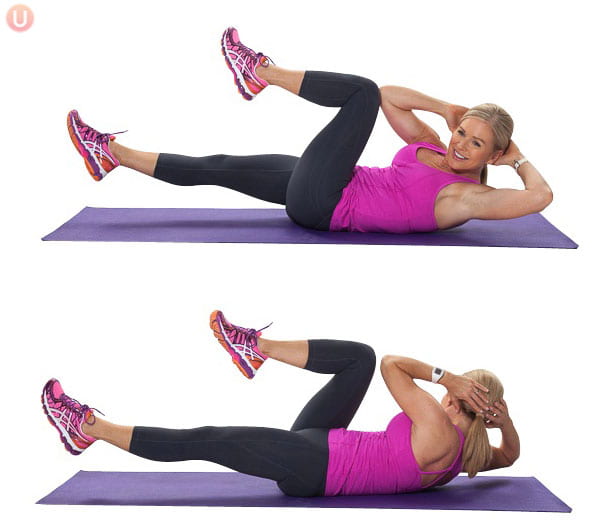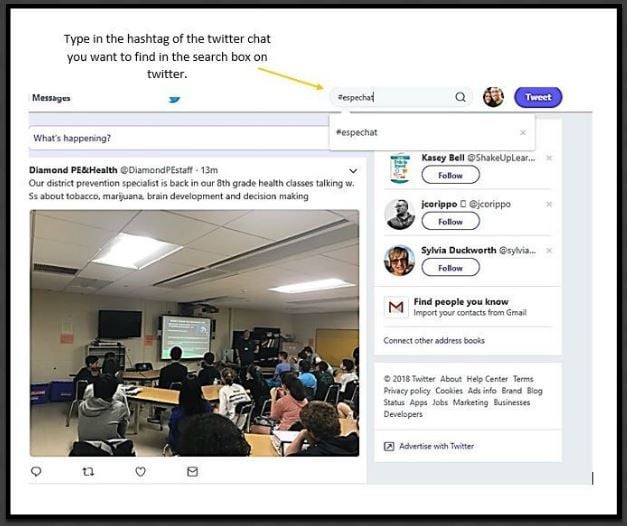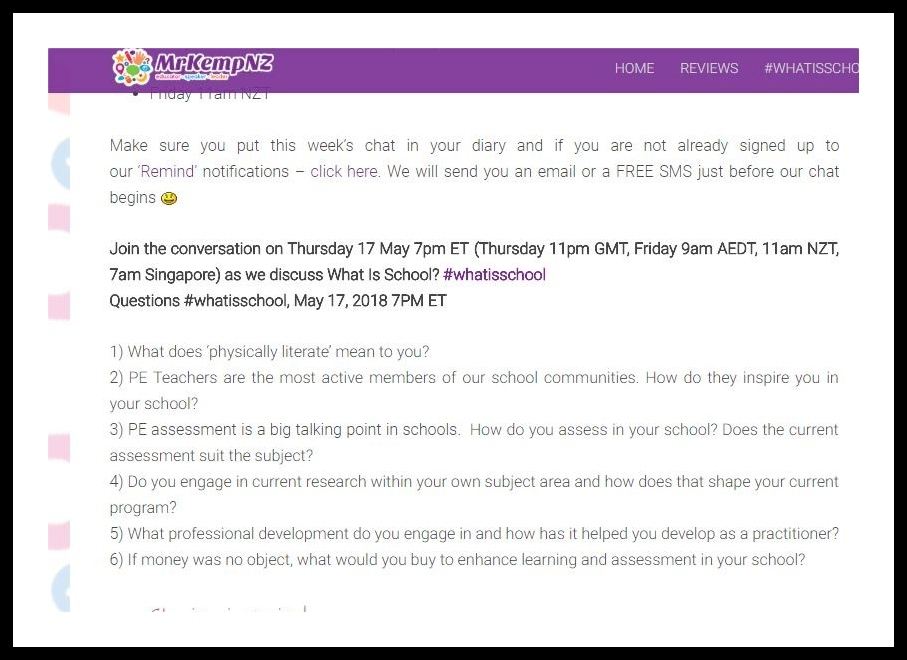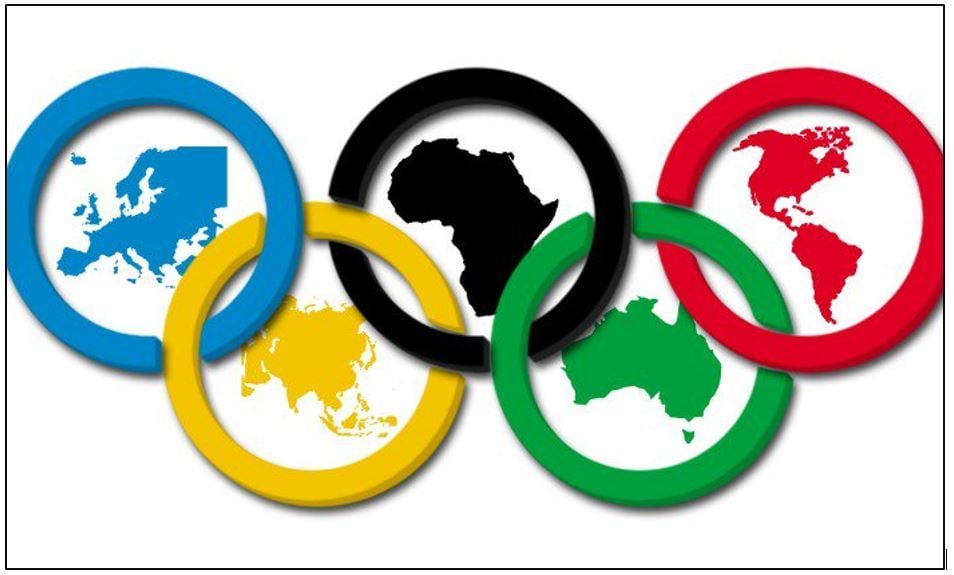Organization: We’ve tried to cover all 7 Olympic Sports and most of the 15 disciplines
I have enough equipment out so that everyone can be doing “something”. I have the gym set up so that they can move at their own pace, some will go around several times, others may go slower. No “cutting” in line, but you can pass at different points. It is a continuous station. I also made an Olympic Flag to hang in the gym. Have everyone assigned to start at a different place to get things started, however I do have everyone start with a torch run.Description:
Several Stations can be timed or scored: I have marker boards at the stations so that the athletes can post scores or times (optional).Stations: (not necessarily in order)Light the Olympic Torch: Torch Run, use ribbon sticks, each participant runs 3 laps around the “stadium” with the Olympic Torch (ribbon stick) (Can time laps)Biathlon: Ski with paper plates on your feet (shuffle your feet with plate on the floor). I have cones out and around the gym, they must move around the biathlon course with a bean bag in their hand, at the half way point in the race, they will see a target, they need to throw the bean bag at the target, retrieve the bean bag, and ski back to the start. (Can time even, and write down time and where the bean bag hit the target)Olympic Rings: First person stands with one hula hoop in their hand, they must pass the hoop to the next person in line (who is holding the first persons hand), by putting their body inside/through the ring; the ring can’t touch the ground. (Optional: The last person must stay until someone else joins their hand and pass along the ring.)Skating: Pairs Figure Skating: with a partner link arms and skate on paper plates. Skaters must stay linked (hands or elbows) and must skate a 30 second “program”.Curling: Shuffle board sticks, and spider balls, stand at start line and try to push spider ball on to shuffle board. Three attempts each to get high score. Post highest number spider ball lands on.
Slalom Course: Place Moguls or hoops/mini cones (8-10 cones) in a zigzag fashion. Skiers must jump (feet together) over cones. (Post time)
Hockey Goal: Start with Hockey stick and bean bag, must dribble around cones to reach goal line, once at goal line shoot for a goal (shoot bean bag into net). Post time required to dribble and shoot
Skiing: One skier on a scooter, use plungers to move scooter around course that has been marked out
Skier: While jumping rope do 15 bell jump. Post time
Cross Country Ski: I have Foam Rectangles that are about 3 feet long and 2-3″ thick, I tie jump ropes around them and athletes “ski” around the course that is marked out. Post time
Speed Skating around Oval: Mark out an oval with floor tape, using paper plates, see how long it takes to ski “x” times around. Post time
Ski Jump: Free-Style: Use a mat Wedge, lay it flat, I allow students to run up wedge and “jump off” and perform a free-style jump. Finish by landing on a floor mat. (My wedge is only about 2 feet off the ground) And they must land on the floor mat, or they are disqualified.
Luge: 2 scooters with one floor mat folded and on top, connecting the two scooters. One person rides while a partner pushes Luge to the end, and then switch, pushing the luge back to the start. Post time
Bob Sleigh: (2 man) 2 scooters, one person on each. They must hook themselves together and move through the course. Post time
Skeleton: 2 scooter with one person on both. Athlete lays on their stomach on scooters and uses hands to get through course. Post time
Speed Skating: slide trainer and slide side to side. Post times
Olympic Symbolism: (make posters and hand in the gym)
Olympic Creed: “The most significant thing in the Olympic games is not to win but to take part. Just as the most important thing in life is not the triumph but the struggle. The essential thing is not to have conquered but to have fought well.”
Olympic Oath: In the name of all competitors, I promise that we shall take part in these Olympic Games, respecting and abiding by the rules which govern them, in the true spirit of sportsmanship, for the honor of our teams.
Olympic Rings: The five interlocked rings represent the five continents of the world. In every flag of the world there can be found at least one color of the colored rings. The colors of the rings from left to right are blue, yellow, black, green, and red. Whether the rings are in different colors or are in the same color, they are the official Olympic symbol and the exclusive property of the International Olympic Committee (IOC) according to Rule 6 of the IOC Charter.
Olympic Motto: “Citius, Altius, Fortius” expresses the aspirations of the Olympic movement. Loosely translated, these Latin words mean “Swifter, Higher, Stronger.”
Olympic Torch and Flame: The torch is usually carried hand-to-hand by relays of runners from the original site of the Olympic Games at Olympia, Greece, to the main stadium of the Games. As a symbol of peace among peoples, the flame represents the basic spiritual significance of the Olympic movement.
Olympic Flag: The Olympic Flag, which appeared in Olympic competition for the fi9rst at Antwerp in 1920, has a white background with no boarder. In the center are placed five interlocked rings whose colors are blue, yellow, black, green and red.
Doves: A symbol of peace, the doves are released at the opening ceremony to remind all peoples that the Olympic Games are held in an atmosphere of peace. (I use the Doves for discipline…I had 4…hanging in the gym, if something un-peaceful happened, I took down a Dove). |








